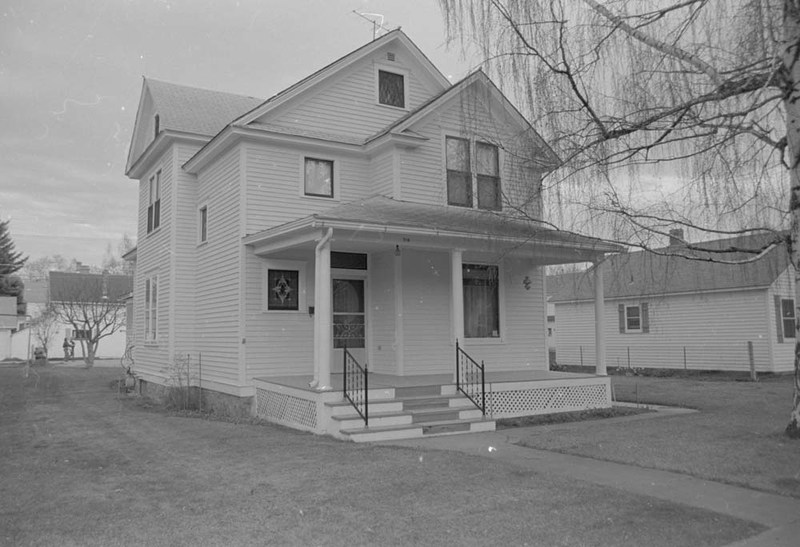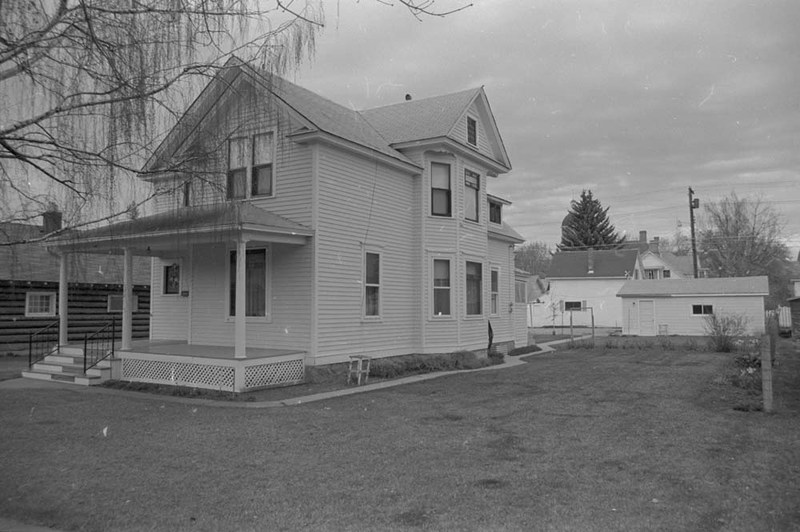
Early twentieth century architects widely rejected the elaborate ornamentation and complicated lines associated with the Queen Anne style, the late nineteenth century’s most popular architectural style. Among the general public, however, taste changed more gradually. The complicated roofline of this two-story home reflects Queen Anne’s tenacious appeal, but other architectural choices—including Doric columns, wide eave returns, and an overall lack of fussiness—reflect the growing attraction of classical simplicity. The Anaconda Copper Mining Company likely constructed this outstanding example of transitional Queen Anne/Colonial Revival architecture before 1909. That year, Swedish immigrants Nels and Mathilda Peterson purchased the house. Nels came to America in 1888 and found work on the Northern Pacific Railroad in Missoula, where he and Mathilda married in 1898. The couple later moved to Hamilton, where six of Nels’s siblings also settled. In Hamilton Nels owned and operated a livery stable, and he and Mathilda raised four children. This house must have suited them; the Petersons lived here until their deaths, hers in 1937 and his in 1948.
Images

